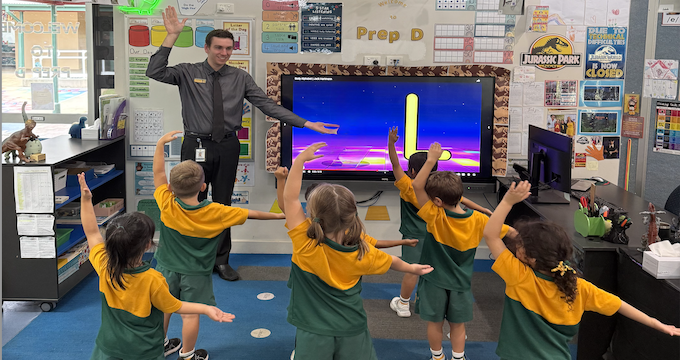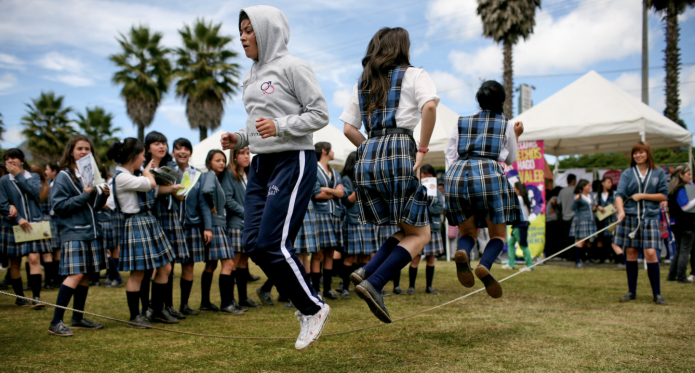As digital technology becomes more ingrained in early childhood education, the debate over its effects on young children’s physical literacies intensifies. While there’s no denying the potential of technology to engage children in learning, it’s crucial to ask: How does it affect their physical literacies? This article explores the impact of digital technology on physical literacies and offers practical advice for parents and educators looking to strike a healthy balance. My research specifically investigates how teachers and parents perceive digital technology’s influence on young children’s physical literacies, addressing a critical gap in understanding its effects beyond motor skills.
The Growing Role of Digital Technology in Early Childhood
We live in an increasingly digital world, and young children are no exception. Tablets, smartboards, and educational apps are now staples in early childhood education. They offer children interactive learning experiences that can stimulate creativity, enhance cognitive skills, and foster social collaboration.
Research shows that when used effectively, technology can support literacy and numeracy development, catering to diverse learning needs (OECCED). But as screen time increases, concerns about its effect on physical literacies also rise. With children spending more time on devices, is there enough time left for physical activity, the kind of play that builds motor skills like running, jumping, and balancing?
What Is Physical Literacy?
The Australian Sports Commission states that physical literacy is about more than just mastering physical skills—it’s about confidence, motivation, and the ability to engage in physical activities for life. Early childhood is the perfect time to nurture this because active play lays the foundation for lifelong health. The Australian Physical Literacy Framework and The Early Years Learning Framework (EYLF) stress the importance of physical activity in children’s overall development, highlighting that active play is essential for physical, social, and emotional growth.
Yet, with the rise of screen-based learning, educators and parents must ask: how do we ensure that technology enhances, rather than detracts from, children’s physical literacies? Despite its importance, current research lacks a comprehensive definition of how digital technology influences physical literacies in young children. My research seeks to address this gap by exploring how teachers and parents perceive and define physical literacies in today’s digital age.
How Does Digital Technology Affect Physical Literacies?
Research on the intersection of digital technology and physical literacies presents a complex picture. On one hand, increasing screen time is linked to lower levels of physical activity, which can hinder the development of essential motor skills such as balance, coordination, and agility. While studies show a correlation between increased screen time and reduced physical activity, little research has explored how parents and educators actively manage these challenges in early education settings.
On the other hand, there’s growing evidence that digital technology can support physical literacies when used creatively. Motion-based games, such as those using augmented reality (AR) or exergaming, encourage children to move while they engage with technology. Apps that promote activities like dance or yoga can integrate fun physical challenges with the engaging aspects of digital play, making them excellent tools for developing motor skills.
So, how can we ensure that technology is a tool that promotes, rather than stifles, physical development?
Striking the Right Balance: Practical Tips for Educators and Parents
The key is balance—striking the right balance between technology and physical activity in early childhood education is essential for fostering healthy development. Here are some tips to help educators and parents find the right balance when incorporating digital technologies into young children’s physical literacies:
- Incorporate active digital play, where educators and parents can choose technology tools that encourage movement, such as interactive whiteboards for dance activities or apps designed for physical exploration. These tools help make learning more dynamic and engaging.
- Limiting screen time according to the World Health Organization (WHO) guidelines is important to prevent it from replacing physical activity. It is essential to prioritise free playtime, where children can move, explore, and engage physically, which is vital for their development.
- Blending technology with outdoor play provides another valuable approach. By using nature exploration apps to guide outdoor activities or integrating storytelling apps with physical role-playing, educators and parents can ensure that technology supports active learning while fostering both cognitive and physical growth.
- Engaging parents is equally important. Encouraging co-play or co-viewing during screen time transforms it into a shared experience that prompts movement and meaningful interactions. This not only strengthens parent-child relationships but also supports the development of physical literacies.
- Prioritising unstructured outdoor play remains essential, as it offers children opportunities to develop motor skills and interact with their environment. Ensuring children spend time outdoors every day, free from screens, supports their physical and emotional well-being.
Doesn’t have to be a battle
The relationship between digital technology and physical literacies doesn’t have to be a battle. The truth is, when used thoughtfully, digital tools can complement physical play and support young children’s overall development. It’s about finding a balance—one where technology enriches learning without overshadowing the need for physical activity.
By integrating technology that encourages movement and setting clear boundaries around screen time, educators and parents can help children thrive in both the digital world and the physical one. By examining how digital technology intersects with physical literacies, my research aims to provide educators and parents with the knowledge they need to make informed decisions about integrating technology while fostering active play. Understanding these perspectives can help bridge the gap between concerns about screen time and the opportunities digital tools offer to support movement and engagement.
What’s your experience with balancing technology and physical activity in early childhood education? Share your thoughts in the comments below!

Trent Davis is an experienced early childhood educator and is passionate about advancing research in the early years’ domain. He is currently an adjunct academic and PhD candidate (post-confirmation) within the School of Education and Professional Studies at Griffith University. His study applies a case study and phenomenological approach to uncover these perspectives, offering practical insights that can shape future early childhood practices.
HEADER IMAGE: COURTESY OF AB PATERSON COLLEGE







